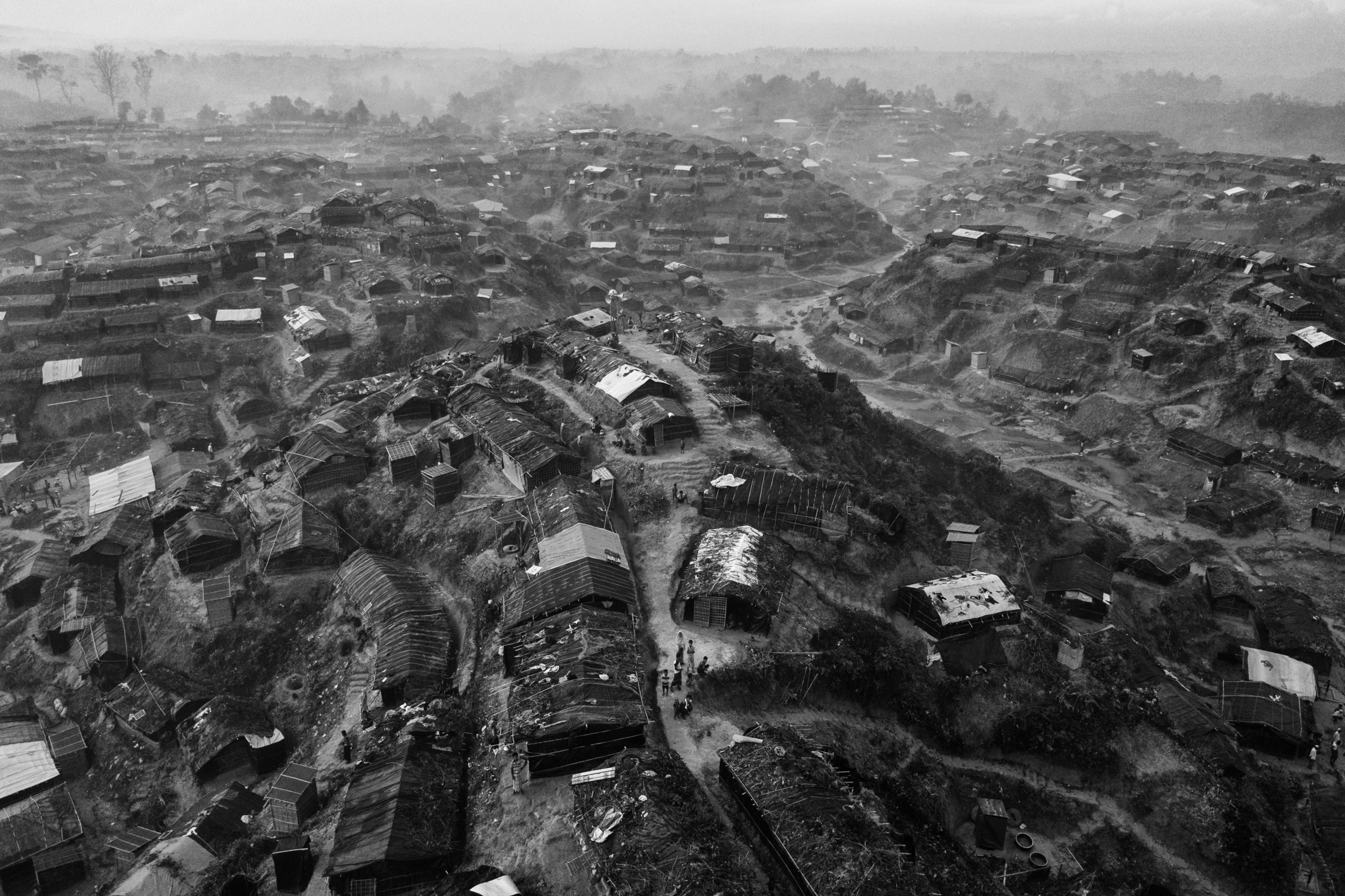Sign up for The Media Today, CJR’s daily newsletter.
In late 2017, on the shores of southern Bangladesh, hundreds of thousands of Rohingya people completed a grueling march to escape the campaign of rape and murder by Myanmar’s military. As they settled into huts dotting the muddy landscape, journalists from around the world descended on the camps to tell their story.
“Can you speak to someone who was raped?” one freelance reporter who arrived in Bangladesh in late 2017 was asked by her editor. The reporter, who spoke to CJR on condition of anonymity, says she was shocked that the request came without mention of the ethics of reporting on trauma.
But when she spoke to a United Nations representative in the country, she learned the request was far from unprecedented. The representative said that the United Nations Population Fund had banned reporters from talking to the Rohingya refugees in its care after a journalist had entered a safe space, reserved for survivors of sexual violence, and asked out loud, “Has anyone in here been raped?”
ICYMI: He helped expose one of the biggest scams in history. Now he’s being prosecuted.
There are good reasons to interview survivors of sexual violence. Their stories can attract international sympathy and assistance, and the act of recounting trauma, and of having one’s story told, can sometimes be healing. But journalists who assume their reporting will only have positive consequences are often wrong. A 2018 study of a similar circumstance found that 85 percent of Yazidi survivors of sexual violence by ISIS in Iraq reported experiencing unethical journalistic practices including being pressured to speak.
While similar data have not been collected from Rohingya survivors, researchers who have worked on the ground say that, in the melee of reporters who parachuted into the camps and scrambled to find stories of trauma, many journalists neglected their duty to the victims.
“Without a doubt, we can look back and say things did not go well,” says Skye Wheeler, a Human Rights Watch researcher who interviewed dozens of Rohingya survivors of sexual violence in the weeks after they arrived in Bangladesh. “People were re-interviewed too many times.”
Kate Cronin-Furman, a professor of human rights at University College London, says some were interviewed on as many as 70 occasions. “When channels of information out are really limited, the ones that do exist get overused. The few individuals with connections to the international community become key information brokers,” Cronin-Furman tells CJR.
“As a consequence, almost all visitors to the camps may end up working through the same handful of people on the ground, and the same relatively small group of survivors may get trotted out over and over again to meet every visiting dignitary and researcher. This can take a devastating toll.”
In October 2017, a Rohingya woman named Rajuma Begum, 20, told The New York Times’s Jeffrey Gettleman that Myanmar soldiers beat and gang-raped her and shot her mother and brother. Her words focused the international community on the horrors Myanmar inflicted upon the Rohingya: “They threw my baby into a fire.”
As she told her story to Gettleman, Rajuma began sobbing. In an essay about the reporting process that the Times later ran, Gettleman recounted his anger at himself for having brought her to tears. “Why am I putting her through this?” he recalled thinking.
The potential for re-traumatization—when a survivor is exposed to triggers that cause her to relive previous trauma—is extremely high during interviews about sexual violence, Wayne Jordash, a lawyer representing 400 Rohingya who have filed a request to the International Criminal Court to investigate Myanmar for genocide, says. “You can’t guarantee that you won’t be responsible for that,” Jordash tells CJR.
Gettleman ultimately carried on with the story, assuring himself that not interviewing Rajuma would be worse—a “further injustice.” But that decision exposed Rajuma to yet another complication. Before she told Gettleman that her baby was thrown into a fire, she had already told a different version of her story. “They ripped my son from my arms and threw him [on the ground] and cut his throat,” she told Al Jazeera in September 2017. Later, she told others that her baby was killed with a machete, making no mention of the fire.
Given the ordeal the Rohingya have been through, the fact that her account—or the accounts of any Rohingya person—is inconsistent isn’t surprising, but it presents a challenge for reporters.
Jordash, the lawyer, tells CJR: “International prosecutors don’t like multiple statements being taken from witnesses or victims because it creates the opportunity for inconsistency, which then creates opportunities for defense counsel to undermine our case.”
Gettleman tells CJR he was unaware of Rajuma’s conflicting stories, and he hopes the positive impact of his story outweighed the pain Rajuma endured by sharing it. “I believe we journalists are in the empathy-generation business, and if we do our jobs right, then we help people have a little more empathy and understanding for others,” he says.
But Wheeler, the researcher who had been among the first to interview such survivors, says no outcome justifies ignoring the copious resources available to reporters on how to identify and interview survivors of sexual violence ethically. “Our first obligation is to do no harm,” she tells CJR. “It doesn’t matter what the potential impact may be, if someone is harmed by our work as researchers, we have failed.”
ICYMI: Jason Leopold discusses controversial BuzzFeed scoop
Correction: A previous version of this story said that an interview with Rajuma Begum in Rolling Stone magazine had not mentioned fire as part of her ordeal. It did.
Has America ever needed a media defender more than now? Help us by joining CJR today.



